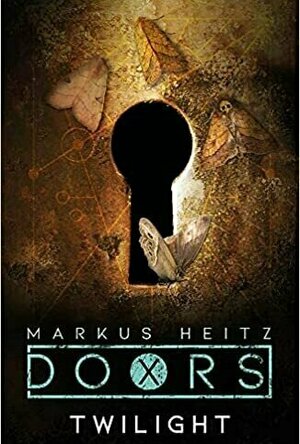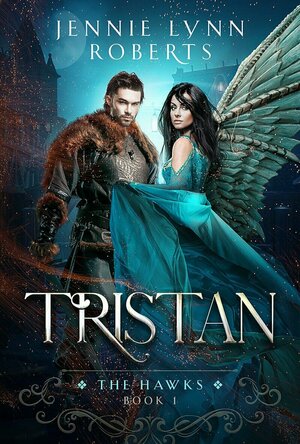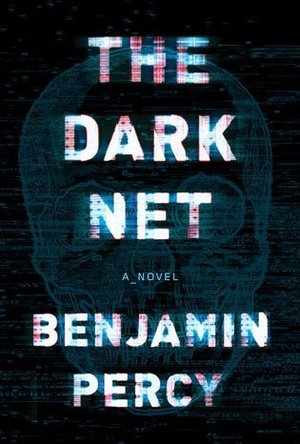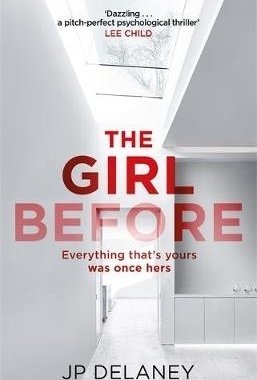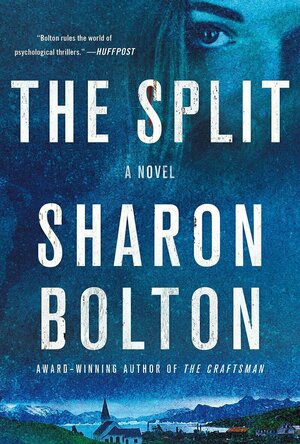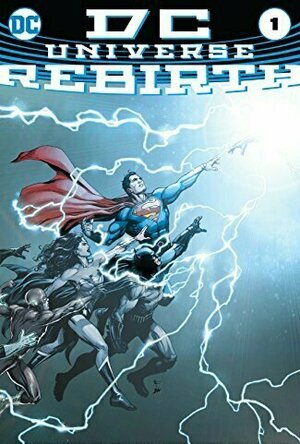Search
Search results
Ian Anderson recommended Classic FM Presents... by Alfie Boe in Music (curated)
Ross (3284 KP) rated Doors: Twilight in Books
Mar 24, 2021
Great idea, poorly executed
The idea behind the Doors books is that of three different versions of a story with a shared beginning, but the stories diverge when the characters go through one of three (actually five but two are ignored as far as I'm aware!) doors. A team of people, each hired for their own area of expertise, are tasked with rescuing a rich German man's daughter who has wandered down into the mysterious cellar of their former family home, where a series of doors are believed to lead to strange new places.
The first quarter of these books is identical, with the damsel in distress being introduced and the team coming together and being given their tasks. At this stage, there is next to no organisation around their approach, it really is simply a bunch of people heading into the unknown and being drastically under-prepared. When the team quickly find the missing and take her back to the surface, the reader is left somewhat taken aback at the speed with which it was resolved. This is nothing compared to how the reader feels when the team go back looking for the real missing woman, simply based on their employer's assistant's momentary mistake that the woman's eyes were the wrong colour. This is not challenged by anyone in the team, who head back downstairs. It's a bigger WTF moment than the Batman vs Superman 'Martha' fiasco.
As with some of Heitz's Dwarves books, I think this suffered from fairly poor translation, as a number of phrases and words just are not clear. At no point did i really know where the team were heading, forwards or backwards, which door they went through etc.
And the promise of heading into the future was very much an empty one. Some members of the team briefly find themselves in near-future Frankfurt and there is a short section of the book which adds no value and has no connection to the rest of the book whatsoever. Thereafter, there is just some cliched mysterious dark maze adventures, with some unexplained conspiracy around the use and beginnings of the doors and their purpose. (I am currently around 80% of the way through the 'Colony' book, having mercifully skipped the first, repeated, quarter, and am starting to realise that there is likely to be an overall story arch that only becomes clear once the reader has read all three books).
This book, and the series as a whole, offered so much potential and teased so much, but this one at least completely failed to deliver for me.
Advance copy received from NetGalley and the publishers in exchange for an honest review.
The first quarter of these books is identical, with the damsel in distress being introduced and the team coming together and being given their tasks. At this stage, there is next to no organisation around their approach, it really is simply a bunch of people heading into the unknown and being drastically under-prepared. When the team quickly find the missing and take her back to the surface, the reader is left somewhat taken aback at the speed with which it was resolved. This is nothing compared to how the reader feels when the team go back looking for the real missing woman, simply based on their employer's assistant's momentary mistake that the woman's eyes were the wrong colour. This is not challenged by anyone in the team, who head back downstairs. It's a bigger WTF moment than the Batman vs Superman 'Martha' fiasco.
As with some of Heitz's Dwarves books, I think this suffered from fairly poor translation, as a number of phrases and words just are not clear. At no point did i really know where the team were heading, forwards or backwards, which door they went through etc.
And the promise of heading into the future was very much an empty one. Some members of the team briefly find themselves in near-future Frankfurt and there is a short section of the book which adds no value and has no connection to the rest of the book whatsoever. Thereafter, there is just some cliched mysterious dark maze adventures, with some unexplained conspiracy around the use and beginnings of the doors and their purpose. (I am currently around 80% of the way through the 'Colony' book, having mercifully skipped the first, repeated, quarter, and am starting to realise that there is likely to be an overall story arch that only becomes clear once the reader has read all three books).
This book, and the series as a whole, offered so much potential and teased so much, but this one at least completely failed to deliver for me.
Advance copy received from NetGalley and the publishers in exchange for an honest review.
Debbiereadsbook (1570 KP) rated Tristan (The Hawks, #1) in Books
Mar 26, 2021
This book, right? This book is bloody AMAZING!!
Independent reviewer for Archaeolibrarian, I was gifted my copy of this book.
This book, right? This book is bloody AMAZING!!
I mean, this is the author's first book, that I can see, and it blew me away, it really did.
It's told from Nim and Tristan's point of view, with two others getting a say for a short time. They have clear and concise voices, and you get the setting of this world in dribs and drabs. You do NOT get everything all at once, and I really loved being able to process every little bit as and when it came at me.
And you can process it, just in time for the next bit to be thrown at you. And I really LOVED getting thrown at! I can't tell you how much I love being able to take steps into a new world a bit at a time, I really can't.
There is something much bigger going on here, that is revealed, I'm sure. The clues are there, I think, but I'm not sure I put it all together in the way it's meant to be put together. I mean, SOME things are totally clear, but it's the other bits and pieces that are a little fuzzy and I love that they are, cos I NEEEEEEEEEEEEEEEEEEED the next book to make things unclear!
Tristan and Nim's story is dark and deadly, and somewhat graphic in it's violence in places, but it really is needed, for you to get what has happens to the Blues since the ambush and death of their king. There is passion and love here, but it's not especially explicit, but as much as the violence IS needed, the sex is NOT. You get all you need between Nim and Tristan with what is here.
The people in this world are varied and different, with their own skills and powers and traits unique to their race. Some hints about dragons and Nephilim. Wings for Nim, her brother Val and a couple of Tristan's men. Those things are just *there*, you know? You don't get a big long winded explanation, just Nim stretched her wings. And I loved that!
Like I said, I bloody LOVED this book, and if this really IS this author's first book, she nailed it! Absolutely NAILED it and I cannot wait to see what comes next. I know that Val is next, Nim's brother, and given what happens to him in this book, I think that one might be a much more difficult read.
5 full and shiny stars
**same worded review will appear elsewhere**
This book, right? This book is bloody AMAZING!!
I mean, this is the author's first book, that I can see, and it blew me away, it really did.
It's told from Nim and Tristan's point of view, with two others getting a say for a short time. They have clear and concise voices, and you get the setting of this world in dribs and drabs. You do NOT get everything all at once, and I really loved being able to process every little bit as and when it came at me.
And you can process it, just in time for the next bit to be thrown at you. And I really LOVED getting thrown at! I can't tell you how much I love being able to take steps into a new world a bit at a time, I really can't.
There is something much bigger going on here, that is revealed, I'm sure. The clues are there, I think, but I'm not sure I put it all together in the way it's meant to be put together. I mean, SOME things are totally clear, but it's the other bits and pieces that are a little fuzzy and I love that they are, cos I NEEEEEEEEEEEEEEEEEEED the next book to make things unclear!
Tristan and Nim's story is dark and deadly, and somewhat graphic in it's violence in places, but it really is needed, for you to get what has happens to the Blues since the ambush and death of their king. There is passion and love here, but it's not especially explicit, but as much as the violence IS needed, the sex is NOT. You get all you need between Nim and Tristan with what is here.
The people in this world are varied and different, with their own skills and powers and traits unique to their race. Some hints about dragons and Nephilim. Wings for Nim, her brother Val and a couple of Tristan's men. Those things are just *there*, you know? You don't get a big long winded explanation, just Nim stretched her wings. And I loved that!
Like I said, I bloody LOVED this book, and if this really IS this author's first book, she nailed it! Absolutely NAILED it and I cannot wait to see what comes next. I know that Val is next, Nim's brother, and given what happens to him in this book, I think that one might be a much more difficult read.
5 full and shiny stars
**same worded review will appear elsewhere**
BookInspector (124 KP) rated The Dark Net in Books
Sep 24, 2020
More reviews on https://bbookinspector.wordpress.com
After reading “Here and Gone” by Haylen Beck, I got very interested in the dark net, which is like a black market for everything, so, when I saw this book available for request, I did not hesitate. Another thing which intrigued me about this book, was its cover, I think it describes the mood of this book very accurately.
This novel has a wide variety of characters to choose from (see description), and every character had a story to tell, which made this book really rich and appealing to me. Lela was chosen as the main character of this novel. She was trying to uncover a secret enterprise, which does not leave any trace in the records, and is related to some nasty murders. I think that B. Percy chose her very wisely; she is very old fashion and hates technology, and only this kind of character can survive in this book. I really like when author allows more than one character to express themselves, and Percy didn’t disappoint me in this book with that.
The narrative of this techno-thriller was really dark and riveting, in some places really disturbing. I will admit that, like most of the people these days, I could not live a day without internet, but after reading this book, I started thinking that, this needs to change. Internet is way more powerful than we imagine, and that is kind of scary. This book has an interesting combination of genres; it is horror/sci-fi/thriller. It has real life problems mixed with fiction which makes it an interesting read, but some parts were over the top for me. Even though I love technology, I was slightly overwhelmed with all the terms used in this book, which sometimes felt like reading an IT textbook, and unfortunately my mind would just glide through that information.
This book is not for everyone, you need to know something about internet and have a strong stomach to enjoy it. It offers great action, plenty of twists and turns and is quite distressing. The chapters are quite short, so the reading experience is pleasant and the change of action and characters didn’t make me bored. I think that Percy done a great research for this book and I enjoyed the new things I got to learn about the dark net. The ending of this book was really interesting, and I think it rounded up the book really nicely. So, to conclude, I had an interesting reading experience, and if you like all things internet and are not scared of blood and murders, you might actually find this book really entertaining and enlightening.
Was given this book by publisher for honest review
After reading “Here and Gone” by Haylen Beck, I got very interested in the dark net, which is like a black market for everything, so, when I saw this book available for request, I did not hesitate. Another thing which intrigued me about this book, was its cover, I think it describes the mood of this book very accurately.
This novel has a wide variety of characters to choose from (see description), and every character had a story to tell, which made this book really rich and appealing to me. Lela was chosen as the main character of this novel. She was trying to uncover a secret enterprise, which does not leave any trace in the records, and is related to some nasty murders. I think that B. Percy chose her very wisely; she is very old fashion and hates technology, and only this kind of character can survive in this book. I really like when author allows more than one character to express themselves, and Percy didn’t disappoint me in this book with that.
The narrative of this techno-thriller was really dark and riveting, in some places really disturbing. I will admit that, like most of the people these days, I could not live a day without internet, but after reading this book, I started thinking that, this needs to change. Internet is way more powerful than we imagine, and that is kind of scary. This book has an interesting combination of genres; it is horror/sci-fi/thriller. It has real life problems mixed with fiction which makes it an interesting read, but some parts were over the top for me. Even though I love technology, I was slightly overwhelmed with all the terms used in this book, which sometimes felt like reading an IT textbook, and unfortunately my mind would just glide through that information.
This book is not for everyone, you need to know something about internet and have a strong stomach to enjoy it. It offers great action, plenty of twists and turns and is quite distressing. The chapters are quite short, so the reading experience is pleasant and the change of action and characters didn’t make me bored. I think that Percy done a great research for this book and I enjoyed the new things I got to learn about the dark net. The ending of this book was really interesting, and I think it rounded up the book really nicely. So, to conclude, I had an interesting reading experience, and if you like all things internet and are not scared of blood and murders, you might actually find this book really entertaining and enlightening.
Was given this book by publisher for honest review
BookInspector (124 KP) rated The Girl Before in Books
Sep 24, 2020
I would like to begin by saying one simple word, WOW. This book left me absolutely speechless to be honest. This book is a masterpiece and I’m absolutely in love with this author. This book begins quite calm, by looking for some properties in London and introducing the characters: then - Simon and Emma and now - Jane. It tells two stories at the same time, the action which happened three years ago and the action which is happening currently. I really enjoyed that there is not story from one person’s perspective but two characters are telling their story at the same time. All the main characters are really disturbed in this book and have their own problems which influenced their personalities. There is this taste of “fifty shades of Gray” in this book; just it doesn’t flatter the book unfortunately. I really liked the way characters where untangled while you flip the pages, the way their personalities unfolded. They were not boring, one thing what I would’ve liked, is more insight into Simon's and Edward's personalities and how do they think, I would’ve liked their perspective in the book. Even though the men in this book seemed like strong and demanding ones, in the end of the day I think the women were the strong ones and the most determined ones in this book.
I found the plot original and I loved all the twists and turns which were going on in the book. Every chapter had something happening and it didn’t leave me bored. The more you go into the book, the more plot thickens, the more twists happen and it really kept me hooked. I think it was really great, that the book talked about really important topics, and the psychological aspects of eating disorders, how parents feel after still birth, parents thought about disabled children or how minimalist sees world. I’m new to minimalism and just briefly checked on it, but after reading this book I’m confused if I really want to know more… I loved that the name “the girl before” had deeper meaning than only finding out Emma’s story, it felt way deeper than it looked. The book itself is easy to read and the writing style was not difficult. The chapters are quite short so it doesn’t drag along. I really loved the ending of the book, which concluded the book really nicely but at the same time left me questioning. So to conclude, even though a lot of reviewers bashed this book, I loved this twisted, fast paced and full of suspense and psychological labyrinths creation and I recommend to try it and decide for yourself.
I found the plot original and I loved all the twists and turns which were going on in the book. Every chapter had something happening and it didn’t leave me bored. The more you go into the book, the more plot thickens, the more twists happen and it really kept me hooked. I think it was really great, that the book talked about really important topics, and the psychological aspects of eating disorders, how parents feel after still birth, parents thought about disabled children or how minimalist sees world. I’m new to minimalism and just briefly checked on it, but after reading this book I’m confused if I really want to know more… I loved that the name “the girl before” had deeper meaning than only finding out Emma’s story, it felt way deeper than it looked. The book itself is easy to read and the writing style was not difficult. The chapters are quite short so it doesn’t drag along. I really loved the ending of the book, which concluded the book really nicely but at the same time left me questioning. So to conclude, even though a lot of reviewers bashed this book, I loved this twisted, fast paced and full of suspense and psychological labyrinths creation and I recommend to try it and decide for yourself.
BookInspector (124 KP) rated The Split in Books
Sep 24, 2020
This story is told from multiple perspectives, but the main characters would be Felicity and Joe. Felicity is a scientist, who specialises in ice. She is an amazingly written character in my opinion. All the parts from this character’s life are filled with mystery, intrigue and mindblowing twists. Joe is a very important character in this book as well, he is a psychologist, who together with his detective mother, try to figure out Felicity and her connection to very strange events. I loved how different the characters are in this book, the police officer is an older, overweight woman who loves a pint, but great at what she does nevertheless. I am normally met with these young detectives that are so fit and superhero kind at what they do, that it is kind of refreshing to see a different type of woman that is absolutely amazing at what she does. There are many different characters coming in and out of the picture, and they all have a story to tell.
The book is set in two completely different places, it begins in the remote island of South Georgia, that is absolutely incredible! I loved the research that the author done for this book, the description of South Georgia is unbelievable, it felt like I was there with the characters, running alongside them. The other part of the book was set in Cambridge, where Felicity lives, and all the creepy and unexplained events took place. The narrative is absolutely beautifully developed and delivered. It has everything the reader might want from a thriller and more. It is full of layers, very well placed twists and turns, the suspense was overwhelming, and I was left gobsmacked on many occasions. There are some pretty important topics that the author discussed in this novel, such as homelessness and a lack of psychological help for them, obsession, stalking, child abuse, psychological trauma and many more. The mood and the atmosphere was constantly changing throughout the pages, and it was a true page-turner for me.
I love Sharon Bolton’s writing style since her first book, she knows how to lure the reader with brilliant characters and a superb plot. The audiobook I listened to was narrated by Katie Scarfe, and she did an amazing job with her voice intonations, she brought this book to life. The chapters are quite short, so I believe the pages are just going to fly by too many readers. The ending was very well written, and I was left satisfied with the outcome. I have to tell that this book has plenty of gory and disturbing things related to small children, so please approach this read with caution.
The book is set in two completely different places, it begins in the remote island of South Georgia, that is absolutely incredible! I loved the research that the author done for this book, the description of South Georgia is unbelievable, it felt like I was there with the characters, running alongside them. The other part of the book was set in Cambridge, where Felicity lives, and all the creepy and unexplained events took place. The narrative is absolutely beautifully developed and delivered. It has everything the reader might want from a thriller and more. It is full of layers, very well placed twists and turns, the suspense was overwhelming, and I was left gobsmacked on many occasions. There are some pretty important topics that the author discussed in this novel, such as homelessness and a lack of psychological help for them, obsession, stalking, child abuse, psychological trauma and many more. The mood and the atmosphere was constantly changing throughout the pages, and it was a true page-turner for me.
I love Sharon Bolton’s writing style since her first book, she knows how to lure the reader with brilliant characters and a superb plot. The audiobook I listened to was narrated by Katie Scarfe, and she did an amazing job with her voice intonations, she brought this book to life. The chapters are quite short, so I believe the pages are just going to fly by too many readers. The ending was very well written, and I was left satisfied with the outcome. I have to tell that this book has plenty of gory and disturbing things related to small children, so please approach this read with caution.
BookInspector (124 KP) rated The Honeymoon in Books
Sep 24, 2020
One thing I noticed now, after reading the book, that the blurb is written very creatively, and to find out why you will need to read the book.
The main character in this novel was Jemma. She is a girl, living in London and looking for love. With help of her friend, she finds a boyfriend, and the relationship starts. Jemma gets married and goes on a dream honeymoon, one night, while Jemma gets completely drunk, her husband disappears, and nobody can find him on this little island. The thing is, Jemma can’t remember what happened that night.
This novel is filled with very amusing and unique characters. I really liked their personalities, all except for Jemma. I did not like her decisions, and her personality was not pleasant to me. However, I loved the way Seskis used her in this novel, it was brilliant. I loved the way she manipulated Jemma’s character, in order to create suspense and different moods in the book. The story was told from different perspectives, and that made the book more enjoyable, as I sometimes got tired of Jemma’s “Where is my husband gone?”.
The narrative of this book was very interestingly designed. The quite boring investigation was backed up by a story from Jemma’s past, making the whole story more appealing. This book is divided into four parts, and every part finished with unexpected, course-changing turns and twists, which left me pleasantly baffled. Moreover, every part had a different structure to it, making this novel better with every page.
For the writing style of Tina Seskis, I can give nothing less than fantastic. She is an incredibly gifted writer, who knows, how to keep the reader hooked and interested. I strongly believe that she can make any book a gem to the readers. Seskis made the chapters short and to the point, which kept me glued to this book, I was “eating” chapters one after another, not because I wanted to, it was because I needed to.
Here I have a confession to make, while I was checking how many chapters there were in the book (85 in total), I accidentally saw, what I shouldn’t (it was hard to miss it…). The ending of this novel was absolutely shocking and unexpected, and I loved that the author allowed the characters involved to tell it from their perspectives. So, to conclude, there were some things which didn’t work for me, but overall, I strongly recommend this book to everyone, you simply need to experience this wonderful way, through which Tina Seskis is sharing this story, it is unique, clever and masterful, and I will be reading her work in the future for sure.
The main character in this novel was Jemma. She is a girl, living in London and looking for love. With help of her friend, she finds a boyfriend, and the relationship starts. Jemma gets married and goes on a dream honeymoon, one night, while Jemma gets completely drunk, her husband disappears, and nobody can find him on this little island. The thing is, Jemma can’t remember what happened that night.
This novel is filled with very amusing and unique characters. I really liked their personalities, all except for Jemma. I did not like her decisions, and her personality was not pleasant to me. However, I loved the way Seskis used her in this novel, it was brilliant. I loved the way she manipulated Jemma’s character, in order to create suspense and different moods in the book. The story was told from different perspectives, and that made the book more enjoyable, as I sometimes got tired of Jemma’s “Where is my husband gone?”.
The narrative of this book was very interestingly designed. The quite boring investigation was backed up by a story from Jemma’s past, making the whole story more appealing. This book is divided into four parts, and every part finished with unexpected, course-changing turns and twists, which left me pleasantly baffled. Moreover, every part had a different structure to it, making this novel better with every page.
For the writing style of Tina Seskis, I can give nothing less than fantastic. She is an incredibly gifted writer, who knows, how to keep the reader hooked and interested. I strongly believe that she can make any book a gem to the readers. Seskis made the chapters short and to the point, which kept me glued to this book, I was “eating” chapters one after another, not because I wanted to, it was because I needed to.
Here I have a confession to make, while I was checking how many chapters there were in the book (85 in total), I accidentally saw, what I shouldn’t (it was hard to miss it…). The ending of this novel was absolutely shocking and unexpected, and I loved that the author allowed the characters involved to tell it from their perspectives. So, to conclude, there were some things which didn’t work for me, but overall, I strongly recommend this book to everyone, you simply need to experience this wonderful way, through which Tina Seskis is sharing this story, it is unique, clever and masterful, and I will be reading her work in the future for sure.
Joe Goodhart (27 KP) rated DC Universe: Rebirth #1 in Books
Nov 30, 2020
When I still had my physical comic colletion, this had been one of the last ones purchased before making the change over to digital only, selling off the physical copies. That was then, this is now. Long story short, this review is based off of a re-read as part of my "Marvel's Making Some Dumb AF Decisions of Late, Let's Go With DC Instead" Tour!
Let me just say I remember much of it, but it still hit me hard at the end of it! Just lots and lots of SUPER-feels (is that even a word/thing? Oh well, if not, it is now! lol)! Having the story told from Wally West's POV really helped to drive the overall feeling home.
Unfortunately (and this did not necessarily wreck my enjoyment), this re-reading helped to fuel my desire for DOOMSDAY CLOCK to just finish up already! Still not sure on how you can solicit something without it even being close to completely finished! Or better still how Windows 10 can be ready for release, yet every other week there's a new patch or update for it! :S
There was a lot of set-up for what was to come in the DCU, as well as some nods to things past (including WATCHMAN and CRISIS ON INFINITE EARTHS) and the New 52 (which, for the longest time, I hated with a passion)! You don't have to be a pro at "Where's Waldo?" or even Sherlock Holmes, you just need to be alert and taking in everything with a careful eye.
Speaking of attention to detail... Let me give a shout to all the artists involved in this undertaking: Gary Frank (I love the man's art, but his slowness as far as DOOMSDAY CLOCK is frustrating. Clearly, as this book indicates, he is better at illustrating shorter vignettes, rather than epic 12-issue maxi-series!), Ethan Van Sciver (love or hate, you gotta appreciate his art! Bee-yoo-ti-ful!), Phil Jimenez (always love me some Jimenez pencilling!), and Ivan Reis (never a disappointment). And as important as the artists were, it would be unfair of me not to also acknowledge the inkers and colorists on this: Brad Anderson, Jason Wright, and Joe Prado. So, a big ol' panda-rific round of applause and adulation for the art teams for all their hard work! You guys are all aces!
Over the years, DC has published a more than fair amount of solid events and single issues. Is this the best book they've ever published? I wouldn't go that far, but it a damned good one! And at the end of the day, that's what it really comes down to: whether it's a good or a bad one, hence the name of this pretty cool less-FB-ish social media site! :)
Let me just say I remember much of it, but it still hit me hard at the end of it! Just lots and lots of SUPER-feels (is that even a word/thing? Oh well, if not, it is now! lol)! Having the story told from Wally West's POV really helped to drive the overall feeling home.
Unfortunately (and this did not necessarily wreck my enjoyment), this re-reading helped to fuel my desire for DOOMSDAY CLOCK to just finish up already! Still not sure on how you can solicit something without it even being close to completely finished! Or better still how Windows 10 can be ready for release, yet every other week there's a new patch or update for it! :S
There was a lot of set-up for what was to come in the DCU, as well as some nods to things past (including WATCHMAN and CRISIS ON INFINITE EARTHS) and the New 52 (which, for the longest time, I hated with a passion)! You don't have to be a pro at "Where's Waldo?" or even Sherlock Holmes, you just need to be alert and taking in everything with a careful eye.
Speaking of attention to detail... Let me give a shout to all the artists involved in this undertaking: Gary Frank (I love the man's art, but his slowness as far as DOOMSDAY CLOCK is frustrating. Clearly, as this book indicates, he is better at illustrating shorter vignettes, rather than epic 12-issue maxi-series!), Ethan Van Sciver (love or hate, you gotta appreciate his art! Bee-yoo-ti-ful!), Phil Jimenez (always love me some Jimenez pencilling!), and Ivan Reis (never a disappointment). And as important as the artists were, it would be unfair of me not to also acknowledge the inkers and colorists on this: Brad Anderson, Jason Wright, and Joe Prado. So, a big ol' panda-rific round of applause and adulation for the art teams for all their hard work! You guys are all aces!
Over the years, DC has published a more than fair amount of solid events and single issues. Is this the best book they've ever published? I wouldn't go that far, but it a damned good one! And at the end of the day, that's what it really comes down to: whether it's a good or a bad one, hence the name of this pretty cool less-FB-ish social media site! :)

Kalendarzyk Bella
Health & Fitness
App
Do you want to know when your period starts? Or perhaps you need to know when your fertile days...

Relax & Rest Guided Meditations
Health & Fitness and Lifestyle
App
Enjoy the deep relaxation, stress relief and benefits of meditation with the Meditation Oasis®...

